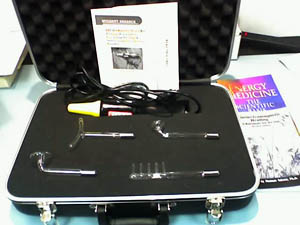|

|
|
|
|
April
2016 
|
With
a stunning aerial photo of a launch pad, the New York Times
reports how Cape Canaveral is planning for sea level rise of
20 to 30 feet by the end of the century, based
on a new climate study. More significant is the projected rise of
CO2 from its present level of 400 ppm up to 600 ppm in the same
time frame, which reminds me of an indoor schoolroom study that
showed "cognitive impairment" as the CO2 levels approached
1000 ppm. IRI believes it is important to support the EPA's
efforts to enforce the pollution classification of CO2, just as
the SO2 and NO2 emissions are categorized today. This reality
check increases the value of nonpolluting fuel-free energy development.
Speaking
of new forms of clean energy and propulsion, our
eighth Conference on Future Energy www.futurenergy.org is where you can learn
about our energy future, at COFE8. All of our speakers are now
listed online with the two-day schedule for July 29-30,
2016 and registration is now open, which also includes free
admission to two days of the concurrent ExtraOrdinary
Tech Conference in the same hotel. (IRI was
the first organization to publicize the "future energy"
concept in 1999 with our first COFE.) IRI Members get 10% off
too.
Of
course, it is always exciting to see what the near future will
bring, such as Story #1 with the latest DARPA spaceplane XS-1.
Designed to have a launcher the size of a business jet, the
reusable spaceplane will fly daily with up to a 3000 pound
payload and will be contracted out soon.
Story
#2 is a breakthrough. Reporting from the University of Houston, a
discovery has been made in the "trapped field magnets"
which are capable of superconducting levitation. With a change in
theory that has been in place for the past 50 years, about three
to four times the magnitude can now be stored in such magnets. Thus motors, MRI, and X-ray
machines will soon have greater capability.
Story
#3 sounds similar in the magnitude of improvement with three
times the efficiency for the production of hydrogen from water
splitting. The University of Toronto reports the
"biggest breakthrough to date" with a new catalyst made
from tungsten-iron-cobalt which also provides at least 500 hours
of continuous use.
Story
#4 hopefully is a sign of the future solution to the existing
hoards of coal and natural gas with a declining demand. Texas is
showing the way by demonstrating a "zero emissions"
natural gas power plant that has a capture rate of 100% and a net
efficiency of 59% with supercritical CO2 as a working fluid with
pure oxygen to produce 50 megawatts. Credit is given to Excelon
and CB&I who are funding the multi-million dollar project.
While
we know that Nevada is a hot bed for many things including solar,
it is interesting that our Story #5 show that Nevada also has a
wellspring of geothermal energy as well. With great diagrams and
a US map of geothermal sites, Nevada leads the nation with temps
above 212 degrees Farhrenheit under the ground. It is expected
that this year will bring another 836 megawatts online from
geothermal plants in Nevada, which by the way is one of the
cleanest energy sources on the planet!
Tune
in next month for a special Future Energy eNews story
on a NASA test of a clean new electromagnetic propulsion device.
|
|
|
Our
Best Selling nano second PEMFdevice
|
|
|
Our
most popular HIgh voltage device
|
|
|
|
Best
NanoSecond PEMF for arthritis, bone issues
|
|
|
|
1) DARPA
Announces Phase 2 of Space Plane Project
|
|
By Anthony Wood Gizmag, April 2016
DARPA has announced the second
phase of its ambitious XS-1 program. The agency is seeking to
make access to space more regular and affordable by employing an
entirely re-usable high-speed, sub-orbital automated spaceplane
as the first stage of its launch vehicle.
Upon reaching a designated height,
an expendable upper stage would separate from the space plane,
and insert a payload into low-Earth orbit (LEO). The spaceplane
would then autonomously land and be serviced for the next launch.
Phase 1 of the program saw DARPA
award contracts to three companies, each of which was paired
with a launch service provider. The teams were tasked with
analyzing the feasibility of the project, and designing their own
versions of the launcher.
"During Phase 1 of the XS-1
program, the space industry has evolved rapidly and we intend to
take advantage of multiple impressive technological and
commercial advances," states Jess Sponable, program manager
for the XS-1. "We intend to leverage those advances along
with our Phase 1 progress to break the cycle of escalating DoD
space system launch costs, catalyze lower-cost satellite
architectures, and prove that routine and responsive access to
space can be achieved at costs an order of magnitude lower than
with today's systems."
Phase 2 will integrate
state-of-the-art technologies in combination with the advances
made in Phase 1 of the program to design and fabricate a
functioning launcher roughly the size of a conventional business
jet. Whereas multiple contracts were offered in the first stage
of the program, DARPA only envisions awarding a single commitment
in Phase 2.
The second stage of the initiative
will have four primary technical goals.
- Fly 10 times in a 10-day period (not
including weather, range and emergency delays) to
demonstrate aircraft-like access to space and eliminate
concerns about the cost-effectiveness and reliability of
reusable launch.
- Achieve flight velocity sufficiently high
to enable use of a small (and therefore low-cost) expendable
upper stage.
- Launch a 900 to 1,500-lb (408 to 680-kg)
representative payload to demonstrate an immediate
responsive launch capability able to support both DoD and
commercial missions. The same XS-1 vehicle could eventually
also launch future 3,000+-lb (1,361-kg) payloads by using a
larger expendable upper stage.
- Reduce the cost of access to space for
3,000+-lb payloads, with a goal of approximately $5 million
per flight for the operational system, which would include a
reusable booster and expendable upper stage(s).
According to DARPA the final
design will make use of advanced heat-resistant materials,
cryogenic tanks and modular subsystems that will combine to lower
the cost and reduce downtime. Conventional rocket-based launch
providers can only offer a limited number of launch slots each
year, and the launches are booked years before the launch time.
Even the Ariane 6, Airbus Safron
Launchers' next-generation rocket, will offer only 12 launches
per year. Employing a reusable spaceplane has the potential to
provide cheaper, more flexible access to LEO. Beyond finding its
uses in the commercial sphere, the XS-1 project will be used to
assure American military satellites can be launched more
frequently.
|
|
2)
Physicists Discover Flaws in Superconductor Theory That Makes
MagLev Three Times easier.
|
|
By Phys.org April 8, 2016
University of Houston physicists
report finding major theoretical flaws in the generally accepted
understanding of how a superconductor traps and holds a magnetic
field. More than 50 years ago, C.P. Bean, a scientist at General
Electric, developed a theoretical explanation known as the
"Bean Model" or "Critical State Model."
The basic property of superconductors is
that they represent zero "resistance" to electrical
circuits. In a way, they are the opposite of toasters, which
resist electrical currents and thereby convert energy into heat.
Superconductors consume zero energy and can store it for a long
period of time. Those that store magnetic energy -known as
"trapped field magnets" or TFMs-can behave like a
magnet.
In the Journal of Applied
Physics, the researchers describe experiments whose results exhibited
"significant deviations" from those of the Critical
State Model. They revealed unexpected new behavior favorable to
practical applications, including the possibility of using TFMs
in myriad new ways.
Much of modern technology is
already based on magnets. "Without magnets, we'd lack
generators [electric lights and toasters], motors [municipal
water supplies, ship engines], magnetrons [microwave ovens], and
much more," said Roy Weinstein, lead author of the study,
and professor of physics emeritus and research professor at the
University of Houston.
Generally, the performance of a
device based on magnets improves as the strength of the magnet
increases, up to the square of the increase. In other words, if a
magnet is 25 times stronger, the device's performance can range
from 25 to 625 times better.
TFMs are clearly intriguing, but
their use has been largely held back by the challenge of getting
the magnetic field into the superconductor. "A more
tractable problem is the need to cool the superconductor to the
low temperature at which it superconducts," Weinstein
explained.
"Bean assumed the
superconductor had zero resistance and that the basic laws of
electromagnetism, developed circa 1850, were correct,"
Weinstein said. "And he was able to predict how and where an external
magnetic field would enter a superconductor."
The method widely used today is to
apply a magnetic field to a superconductor via a pulse field
magnet after the superconductor is cooled. Bean's model
predicted, and until now experiments confirmed, that to push as
much magnetic field as possible into a superconductor,
the pulsed field must be at least twice as strong, and more
typically over 3.2 times as strong, as the resulting field of the
TFM.
Read more
|
|
3)
Hydrogen Splitting from Water Three Times more Efficient
|
|
By Mark Dansie, Revolution Green.
April 2016
We can't control when the wind
blows and when the sun shines, so finding efficient ways to store
energy from alternative sources remains an urgent research
problem. Now, a group of researchers led by Professor Ted Sargent
at the University of Toronto's Faculty of Applied Science &
Engineering may have a solution inspired by nature.
I received a lot of emails
regarding this topic today so I thought I would repeat a post I
did responding to Simon and hopes it puts this a little more in
perspective
This new research has three big
factors in its favor in splitting hydrogen from water
- Low Cost
- Long life
- 3 x efficiency
If the numbers stack up this is
proberbly one of the biggest breakthroughs I have seen to date
I received a lot of emails
regarding this topic today so I thought I would repeat a post I
did responding to Simon and hope it puts this a little more in
perspective
I think this is a work in progress
and it is only part of the equation, solving the bottle necks or
hurdles one by one. In this case quote: " the
scientists focused on a step where oxygen atoms pair up to form a
gas that bubbles away, which has been a bottleneck in the
process"
I never expected it to be overunity as they need to work out the
hydrogen side, however the biggest barrier seems to be overcome.
I also am excited how they are using so many disciplines of
science and developing completely new genres of material science.
This really is a collaborative effort of skill sets and international
collaberation.
In a previous article we published they mentioned they are at
100% at this part of the equation, now the other half has to be
attended to.
This step, from my perspective, after 12 years of researching in
the area is the first real major breakthrough that has provided
the tools, science and direction to tackle the other hurdles and
bottlenecks.
There will never be a single bullet which has often been claimed
in the past, but a series of solutions for a very complex
equation.
The team has designed the most
efficient catalyst for storing energy in chemical form, by
splitting water into hydrogen and oxygen, just like plants do
during photosynthesis. Oxygen is released harmlessly into the
atmosphere, and hydrogen, as H2, can be converted back into
energy using hydrogen fuel cells.
"Today on a solar farm or a
wind farm, storage is typically provided with batteries. But
batteries are expensive, and can typically only store a fixed
amount of energy," says Sargent. "That's why
discovering a more efficient and highly scalable means of storing
energy generated by renewables is one of the grand challenges in
this field."
This new catalyst facilitates the
oxygen-evolution portion of the chemical reaction, making the
conversion from H2O into O2 and H2 more energy-efficient than
ever before. The intrinsic efficiency of the new catalyst
material is over three times more efficient than the best
state-of-the-art catalyst.
The new catalyst is made of
abundant and low-cost metals tungsten, iron and cobalt, which are
much less expensive than state-of-the-art catalysts based on
precious metals. It showed no signs of degradation over more than
500 hours of continuous activity, unlike other efficient but
short-lived catalysts. Their work was published today in the
leading journalScience.
"With the aid of theoretical
predictions, we became convinced that including tungsten could
lead to a better oxygen-evolving catalyst. Unfortunately, prior
work did not show how to mix tungsten homogeneously with the
active metals such as iron and cobalt," says Dr. Bo Zhang,
one of the study's lead authors. "We invented a new way to
distribute the catalyst homogenously in a gel, and as a result
built a device that works incredibly efficiently and
robustly."
|
|
4) Zero
Emissions on New Natural Gas Power Plant
|
|
By Sonal patel, PowerMag April
2016
Construction of a 50-MWt plant
that will demonstrate a novel oxyfuel natural gas power system
using Allam Cycle technology with zero atmospheric emissions has
kicked off in La Porte, Texas.
The demonstration plant is being
built by the technology's developer, Durham, N.C.-based NET
Power, along with Exelon Generation, CB&I, and 8 Rivers
Capital. NET Power's Allam Cycle-named for its lead
inventor, Rodney Allam-burns natural gas (or synthetic gas from
coal gasification) with pure oxygen and uses high-pressure,
supercritical carbon dioxide (CO2) as a working fluid in a
semi-closed loop to drive a combustion turbine. Its byproducts
are mostly liquid water and the CO2 that is recycled by the
process.
The technology can produce
"pipeline-quality CO2 that can be sequestered or used
in various industrial processes, including enhanced oil
recovery," NET Power said in a statement announcing the
demonstration project's groundbreaking on March 9. The company
has claimed that the system has a net efficiency of 58.9% and has
a carbon capture rate of nearly 100%. "Additionally, for a
small reduction in efficiency, the technology can operate without
water, actually becoming a net water producer," it said.
NET Power is giving the
demonstration plant a 50-MWth rating because marketing of
power output will "vary with the testing program of
the demo, rather than having a constant output to the
grid," as company spokesperson Walker Dimmig
told POWER.
Exelon and CB&I are funding
the $140 million program that includes the demonstration plant's
design and construction with a combination of cash and in-kind
contributions. The program also includes technology advancement,
a complete testing and operations program, and commercial product
development.
According to NET Power, Toshiba
developed and is now manufacturing the world's first gas turbine
combustor for a supercritical CO2 system. The turbine has an
inlet pressure of about 30 MPa and inlet temperature of 1,150C.
CB&I is performing the engineering, procurement, and
construction of the plant, and Exelon is providing operations,
maintenance, and development services. 8 Rivers invented and
continues to advance the technology behind the project.
For now, NET Power anticipates
that commissioning of the plant will begin in late 2016 with
first fire scheduled at the beginning of 2017. The demonstration
has enough funding for at least 8,000 hours of operation, Dimmig
said.
The company's end goal is to build
a commercial power plant, and NET Power is actively talking to
potential end-users, particularly in the oil and gas sector, he added.
-Sonal Patel, associate
editor (@POWERmagazine, @sonalcpatel)
CORRECTED (March 11):
Corrects inlet temperature of Toshiba-manufactuered supercritical
CO2 turbine. Clarifies quote attributed to Walker
Dimmig.
|
|
5) Nevada
a Hot Bed for Geothermal Energy
|
|
By Jackie Valley,
LasVegasSun, March 29, 2016
Humans have been using geothermal
energy for more than 10,000 years, since American Paleo-Indians
used hot springs for cooking, bathing and cleaning. But it wasn't
until 1904 that the first geothermal electric power plant was
invented to generate electricity, when Italian scientist Piero
Ginori Conti figured out how to turn steam into power.
The amount of heat in the top
33,000 feet of the Earth's surface contains 50,000 times more
energy than all of the oil and natural gas resources in the
world.
Worldwide, geothermal power plants
produced more than 11,700 megawatts of electricity, enough to
meet the annual needs of more than 6 million typical U.S.
households. The first geothermal plant in the United States
debuted in 1992, and now, two decades later, 69 geothermal plants
operate nationally. Several are in Nevada, and more are coming.
WHERE IS GEOTHERMAL ENERGY
POSSIBLE?
As of 2013, there were 29
operating geothermal power plants in Nevada producing 518
megawatts of electricity. By 2016, plants producing another 834
megawatts are expected to come online.
■ There are about 60 hydrothermal
sites statewide that can be used with existing technology to
generate geothermal energy.
■ Geothermal power plants are
online or planned for the following counties: Humboldt, Mineral,
Esmeralda, Churchill, Pershing, Washoe, Lander, Elko, and Nye, as
well as the Pyramid Lake Paiute Tribe Reservation.
■ Northern Nevada produces roughly
7 percent of its power from geothermal sources because heat from
deep, hot water with temperatures above 212 degrees Fahrenheit
rises through faults in the Earth's surface. Improving
technologies, required to produce more electricity, could extract
more heat from circulating ground water and increase Nevada's
potential power production from renewable energy sources.
The United States produces the
most geothermal energy in the world - 17 billion kilowatts in
2013, or 0.4 percent of the country's total electricity. All of
it is made in eight states.
HOW GEOTHERMAL ENERGY IS GENERATED
■ Workers drill wells into
geothermal reservoirs, where water heated by magma sits
relatively close to the earth's surface. Such hot spots typically
are found in areas with active or geologically young volcanoes
and lots of seismic activity. Nevada has hundreds of hot spots,
mostly in the north.
■ Production wells carry hot water
from the reservoir to a power plant; injection wells return the
water to the reservoir.
■ At the power plant, the hot,
pressurized geothermal fluid expands, causing resulting steam to
turn the blades of a turbine. The rotating turbine shaft spins
magnets inside a large coil, which creates an electrical current.
■ The current in the generator is
sent to a transformer outside the plant, where voltage is
increased and transmitted over power lines to homes and
businesses.
Geothermal systems aren't limited
to large power plants. Homeowners and businesses can install
residential geothermal heat pump systems to produce heat in
winter and cold air in summer. They work in tandem with existing
heating and cooling systems and can be installed anywhere; no hot
spots are needed.
The heat pumps take advantage of
the fact that shallow ground remains at a constant temperature -
about 68 degrees year round. In winter, the system of tubes
drilled a few hundred feet down absorbs heat from the ground and
distributes it to a building through a conventional duct system.
In summer, the system transfers heat from the building to the
underground piping loop, where it is cooled by the Earth.
Installing a geothermal heat pump
in a 2,500-square-foot home costs about $25,000. That's close to
double the price of a conventional system, but geothermal systems
can reduce utility bills by up to 70 percent. Savings come
quicker in bigger buildings, making the systems especially
suitable for schools, apartments and government buildings.
|
|
|
If you
enjoy this service, please consider making a donation by
clicking on the button below. We are a 501 (C)3 Non Profit
Institute and your donations are fully deductible to the maximum
allowed by law.
|
|
|
|
|
|

|














